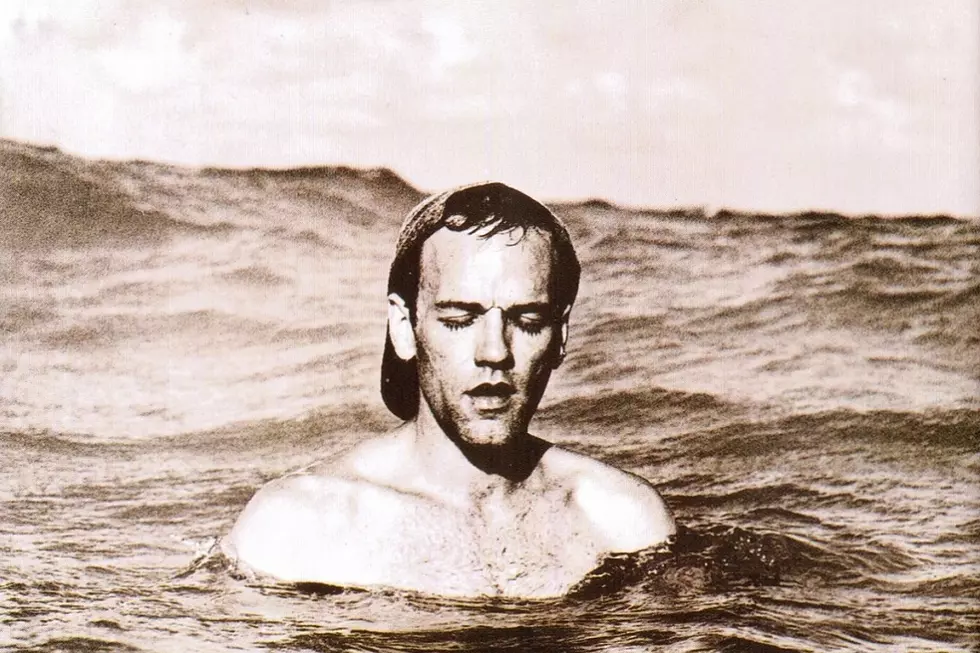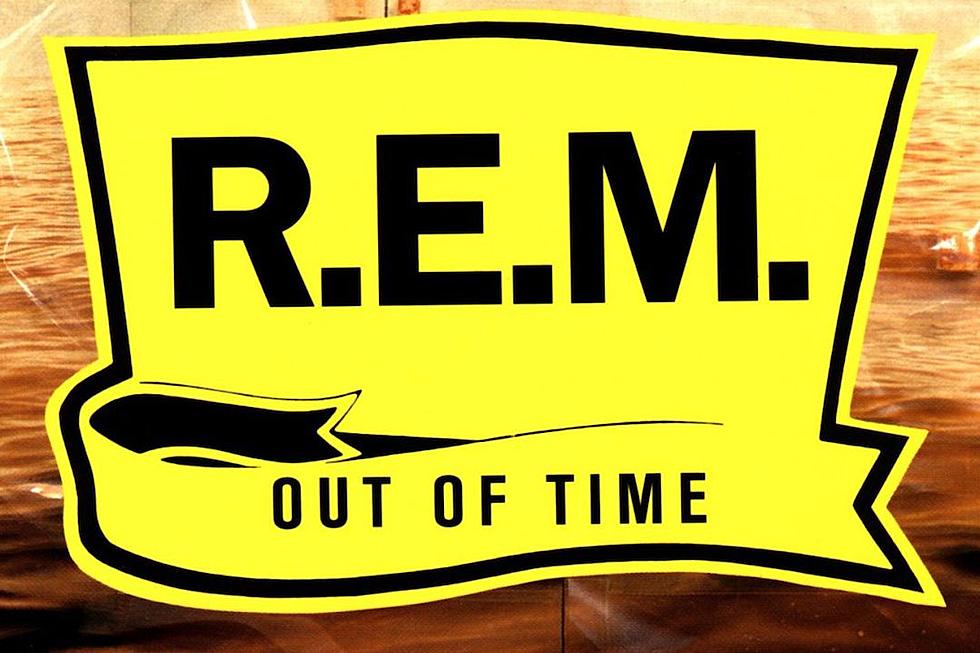
Michael Stipe Explores Life’s Last Moments with ‘Try Not to Breathe’
“Try Not to Breathe” is a pretty bleak command. And, indeed, the second track from R.E.M.’s Automatic for the People is about death. But the song’s title originated with a much more innocuous statement.
During the demo stages for the album, which would come out in October 1992, guitarist Peter Buck was recording the groundwork for a possible new tune on acoustic guitar.
“We were doing the demo, and I had the mic for my guitar right up against my mouth. I was kind of huffing,” Buck told Melody Maker in 1992. “So John [Keane], the engineer, said, ‘You’re making too much noise.’ So I said, ‘OK, take two. I’ll try not to breathe.’ I just meant that I wouldn’t breathe during the take. But Michael [Stipe] heard it and said, ‘Oh, that’s a nice title.'”
Stipe took the idea away and returned with a completed lyric, a scene of someone on their deathbed, told from the perspective of person who is about to shuffle off this mortal coil. The singer came up with a poetic depiction of what this ailing figure would be feeling and thinking. There’s discomfort (“I can hold my head still with my hands at my knees”), but also strength (“The decision is mine”) and acceptance of the end (“I have lived a full life”).
In interviews at the time of Automatic’s release, Buck and bassist/keyboardist Mike Mills talked about the subject of “Try Not to Breathe” as a man (probably because Stipe is male). But the frontman later revealed his deeply personal connection to the song. He was writing about his grandmother. He was reflecting his feelings by imagining hers in what appears to be an internal monologue. She conveys love to her family silently, as thoughts run through her head: “I will try not to burden you / I can hold these inside / I will hold my breath until all these shivers subside / Just look in my eyes.”
Some rock critics and fans marveled at the capacity of a rock singer in his early 30s to write so movingly about an elderly woman. But in this, Stipe might have not only been inspired by his grandmother, but by another songwriter who had a gift for embodying people beyond his years in compositions: John Prine. For a couple years, Stipe had been singing Prine’s “Hello in There” at performances with Natalie Merchant and/or Billy Bragg, bringing an earnest empathy to the song’s portrayal of sad and lonely, elderly folks.
Long before it had lyrics, or a title, “Try Not to Breathe” was one of the first tracks conceived for Automatic for the People. During the final days of making Out of Time in 1990, Buck offered it to be the counterpart to Stipe’s “Nightswimming” lyrics. When the singer opted for Mills’s circular piano idea instead, the guitarist got his idea on tape at Prince’s Paisley Park Studios (where R.E.M. were mixing Out of Time).
The waltzing instrumental returned for the 1992 demo and recording sessions for Automatic, some of which took place at Woodstock, N.Y.’s Bearsville Sound Studios. At that point, the song was nicknamed “6/8 Sailor” for its time signature, then was marked “Passion” when the final touches were added at Bad Animals in Seattle.
“Chord structure-wise, it could be some kind of a mountain ballad,” was how Buck described the track that would appear as “Try Not to Breathe” on the final album. “But then it has electronically altered background vocals and feedback in the bridge, to give it an unsettling feel.”
Like “Drive” before it, this recording crackles in its mix of elements. There’s the roughed-up components (which Buck describes above) and the rattle that seems to be counting down the last moments. But there’s also those long, twangy guitar strains that seem to bend into eternity, drummer Bill Berry’s tasteful tom hits that give just enough to push the song forward, and Mills’ organ overdub, which adds grace to such finality.
If his keyboard playing brings grace to “Try Not to Breathe,” Mills’ backing vocals carry deliverance. Near the middle of the song, R.E.M.’s not-so-secret weapon swoops in to do his best Smokey Robinson. He’s a resplendent echo of the dying woman’s last thoughts: “Something to flyyyyy.” He’s nothing short of an angel, not coming to save the day, but to help make it better. Mills’ vocal performance is what stayed with him, long after he finished work on Automatic.
“A beautiful song, personally one of my favorite backing vocals that I ever did,” he told Stereogum in 2007. “I felt like John Lennon when I came up with it. It’s very nice to feel like John Lennon even if it’s just for five seconds.”
As the album's second track, “Try Not to Breathe” establishes the theme of mortality found on half of the 12 songs on Automatic for the People, but it was the first song on the album to deal with death. Musically, it carries over the acoustic foundation and dark sonic aesthetic from “Drive.” It helped define the album as more subdued and pensive, certainly less guitar-forward than much of Green or Document.
“On quiet little songs like ‘Try Not to Breathe’ … the guitar is always there, but it’s a discordant guitar bubbling under the surface,” Buck told Indie-cator in 1992. “Automatic for the People isn't a real rockin’ album, but I think that’s fine, because there are enough of those around this year as it is!”
Of course, R.E.M. had initially indicated that their follow-up to the blockbuster, but gentle, Out of Time would be a big, rock record. Instead, in the burgeoning era of Nirvana and Pearl Jam, they were offering a death rattle.
“My feeling was – not in a negative way – is that it was kind of a down record with a lot of minor keys,” Buck told Billboard in 2017, “and we were at the age when Michael was thinking a lot about mortality, so I didn't expect it to be a huge hit.”
Yet, Automatic for the People, with the death-focused “Try Not to Breathe” in a prominent position, became a multi-platinum and critical success, displaying R.E.M. at the height of their cultural importance.
R.E.M. Albums Ranked in Order of Awesomeness
More From Diffuser.fm









